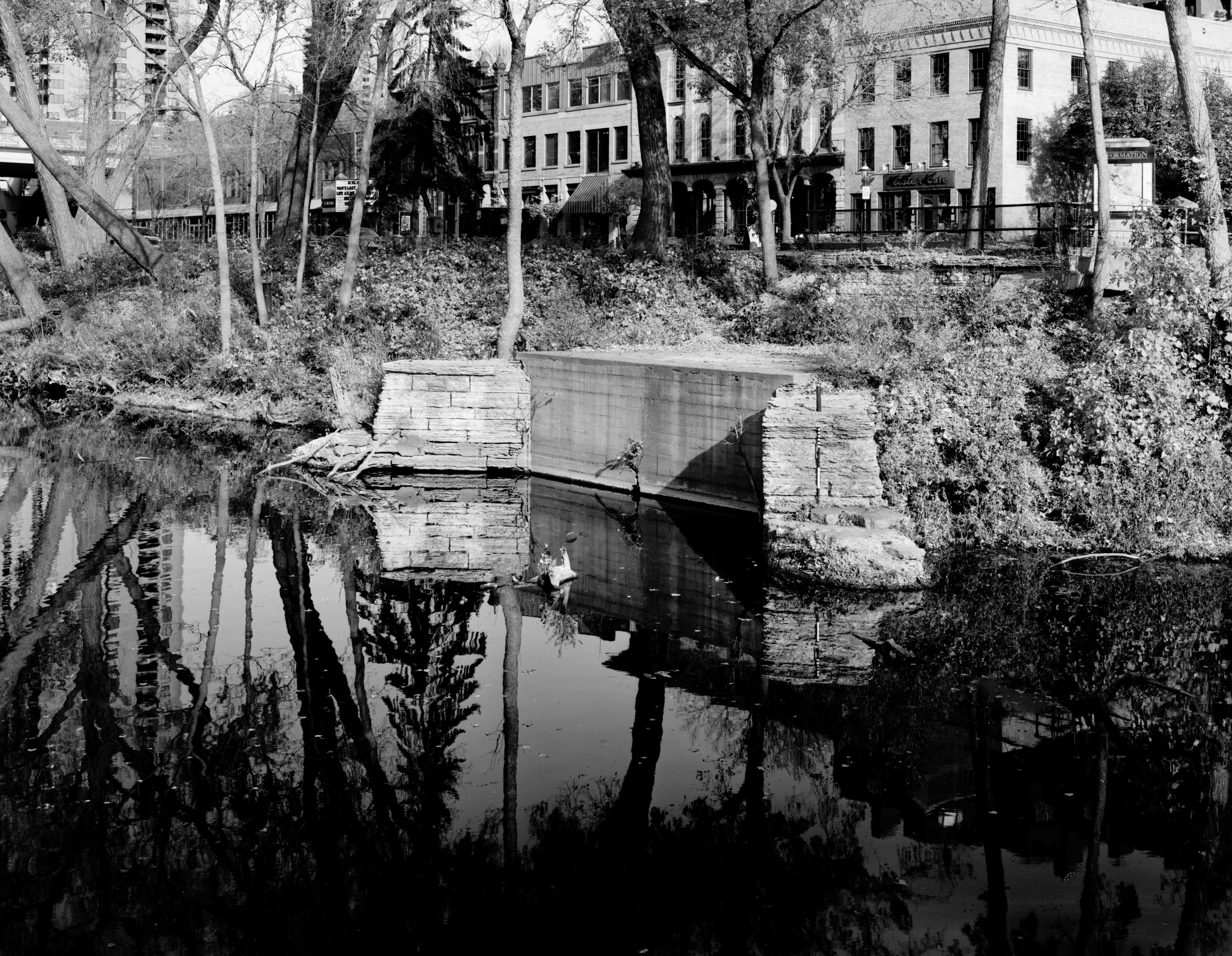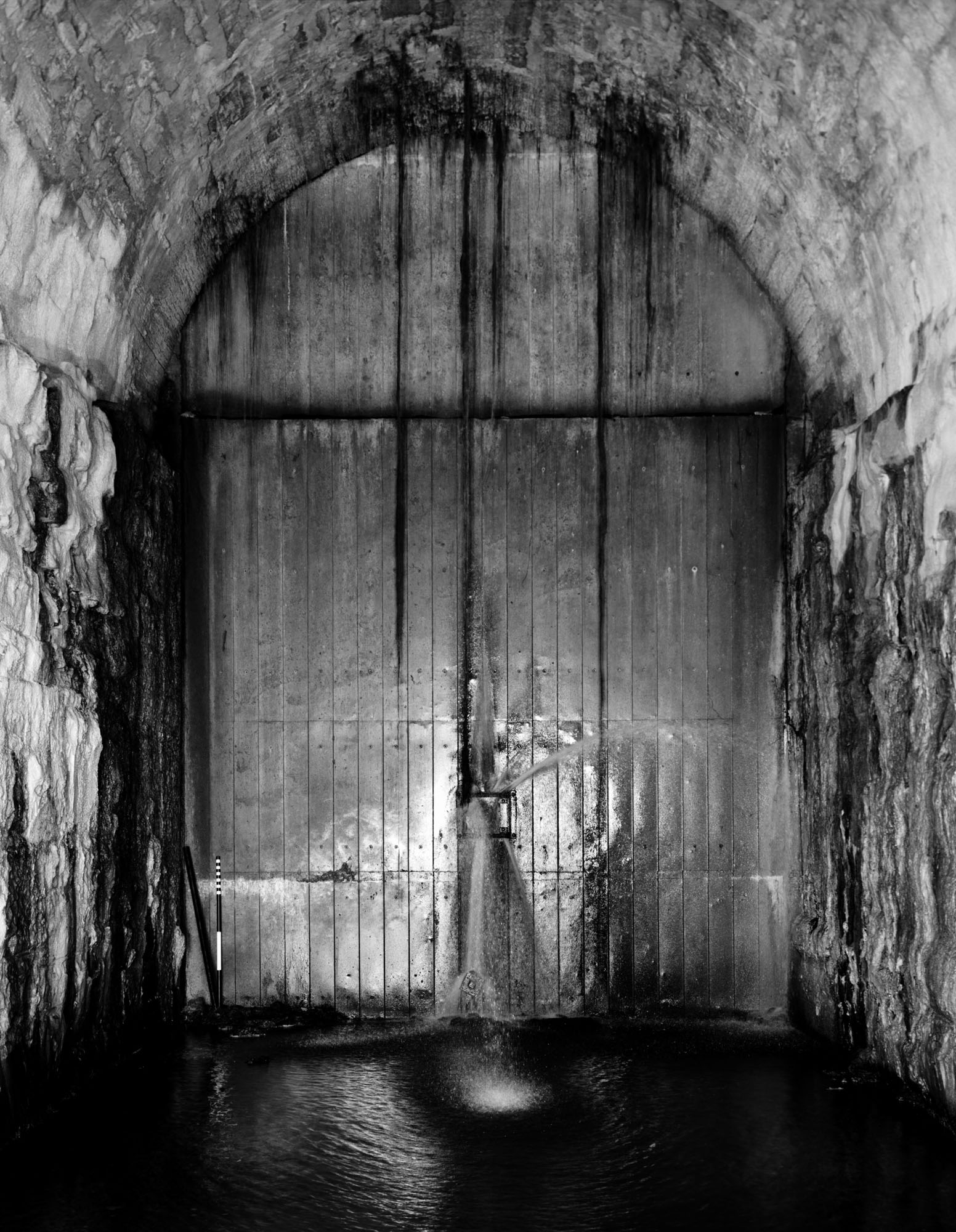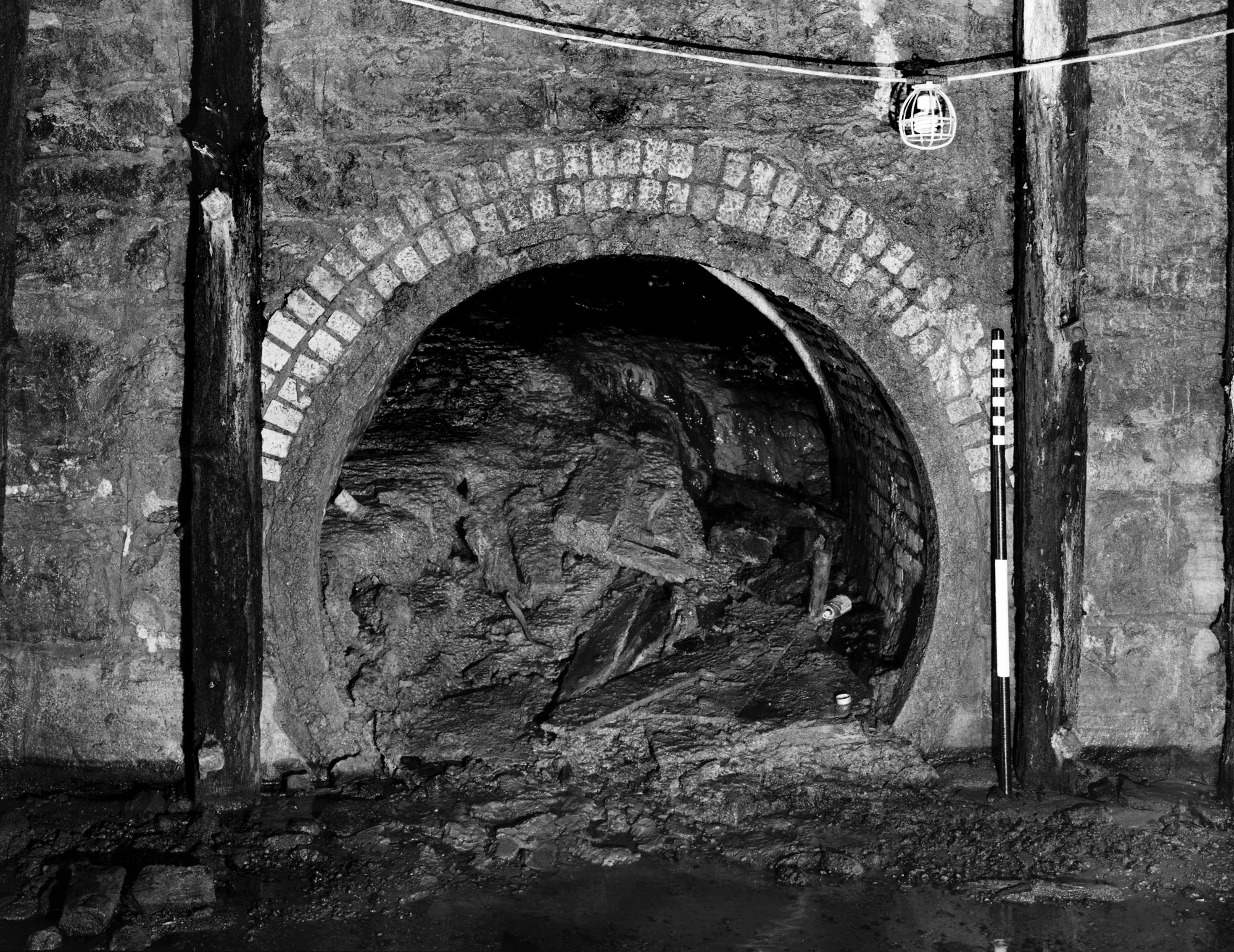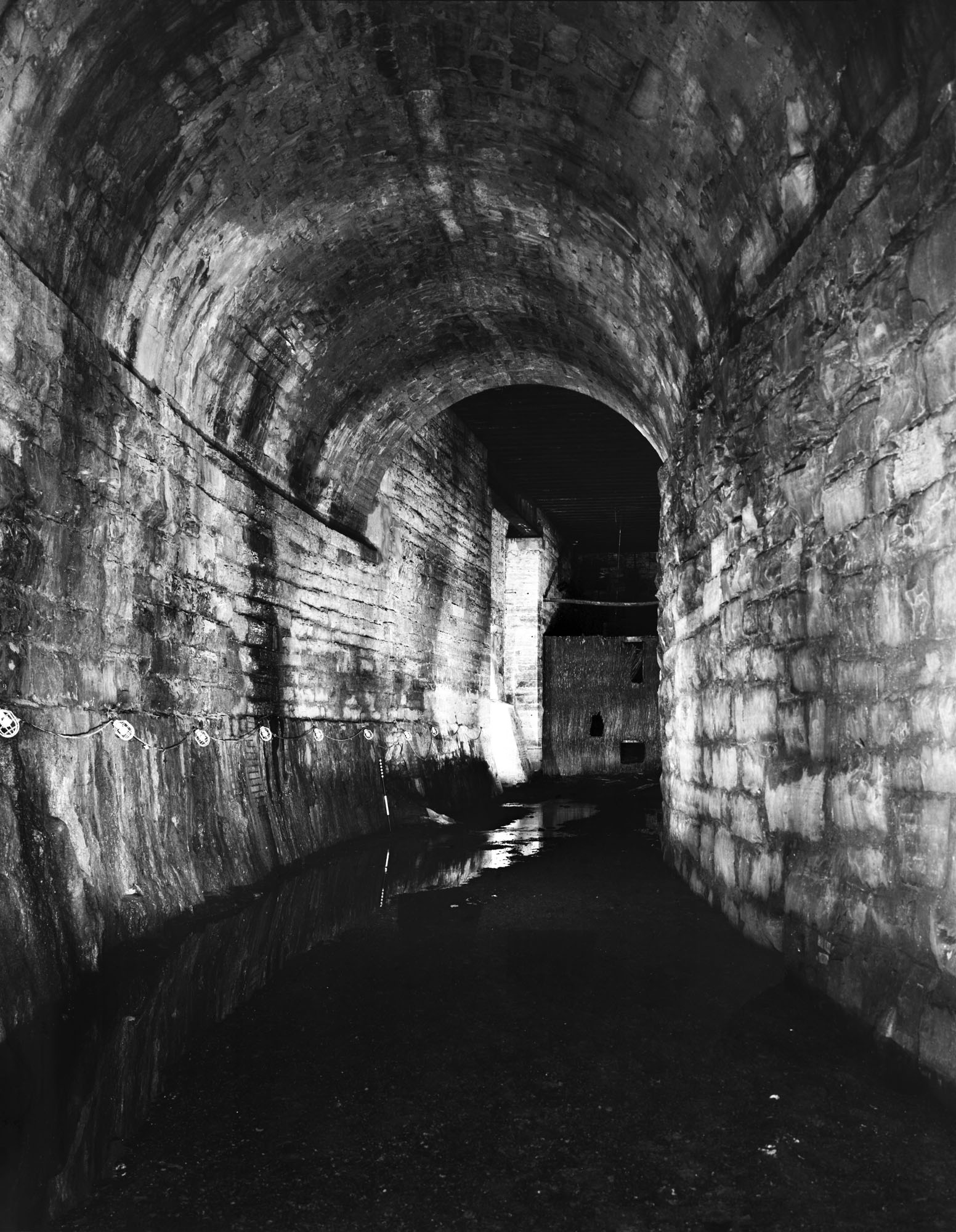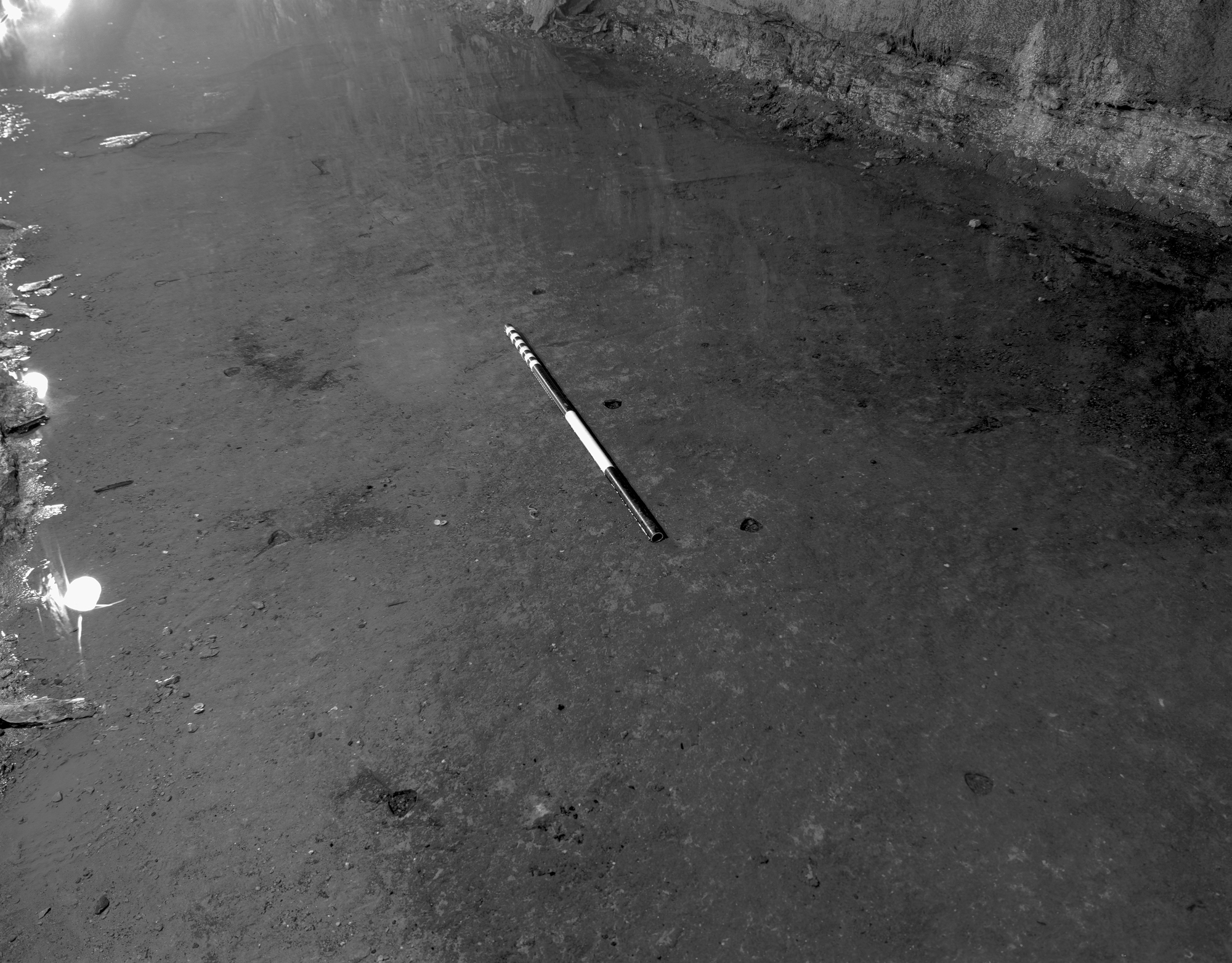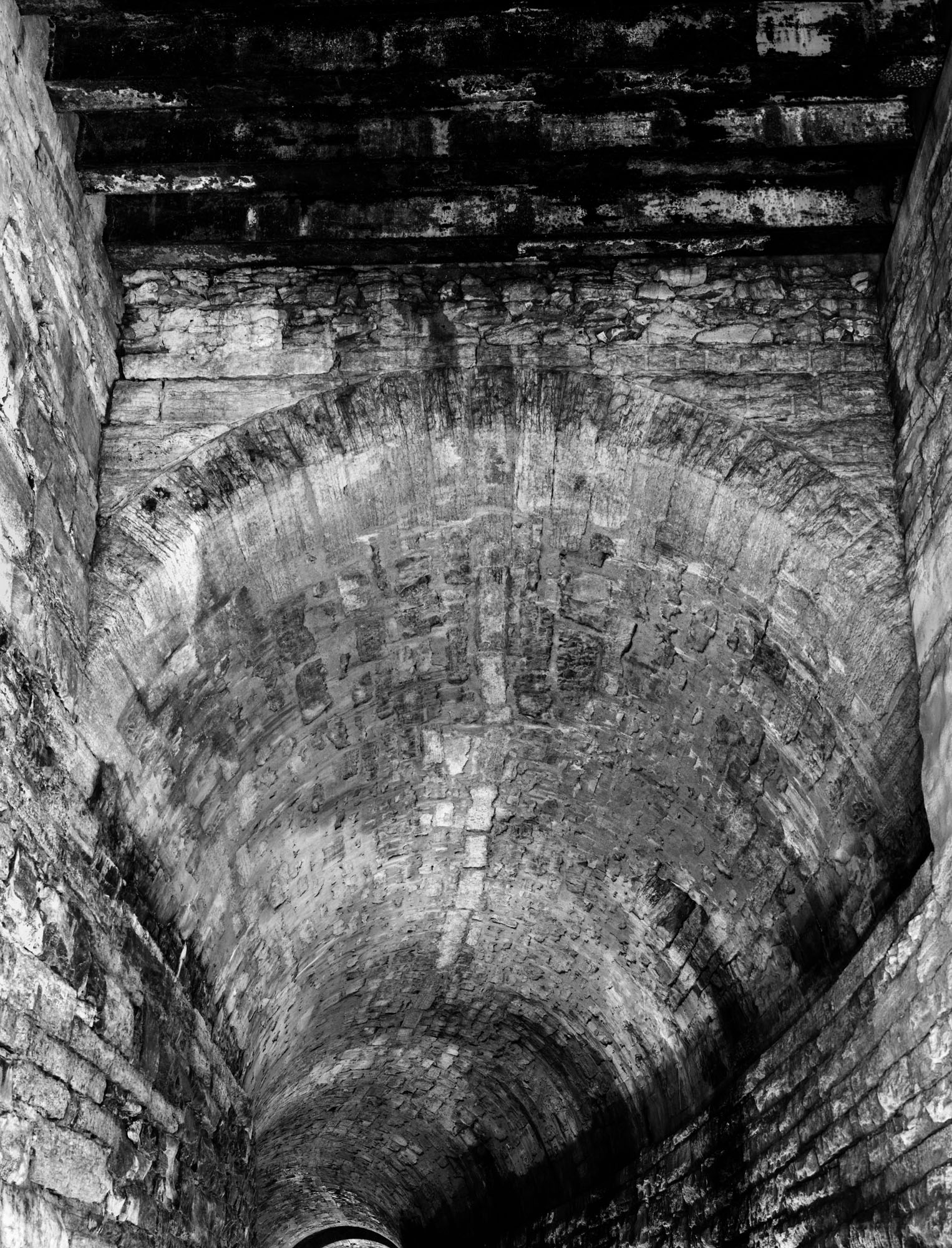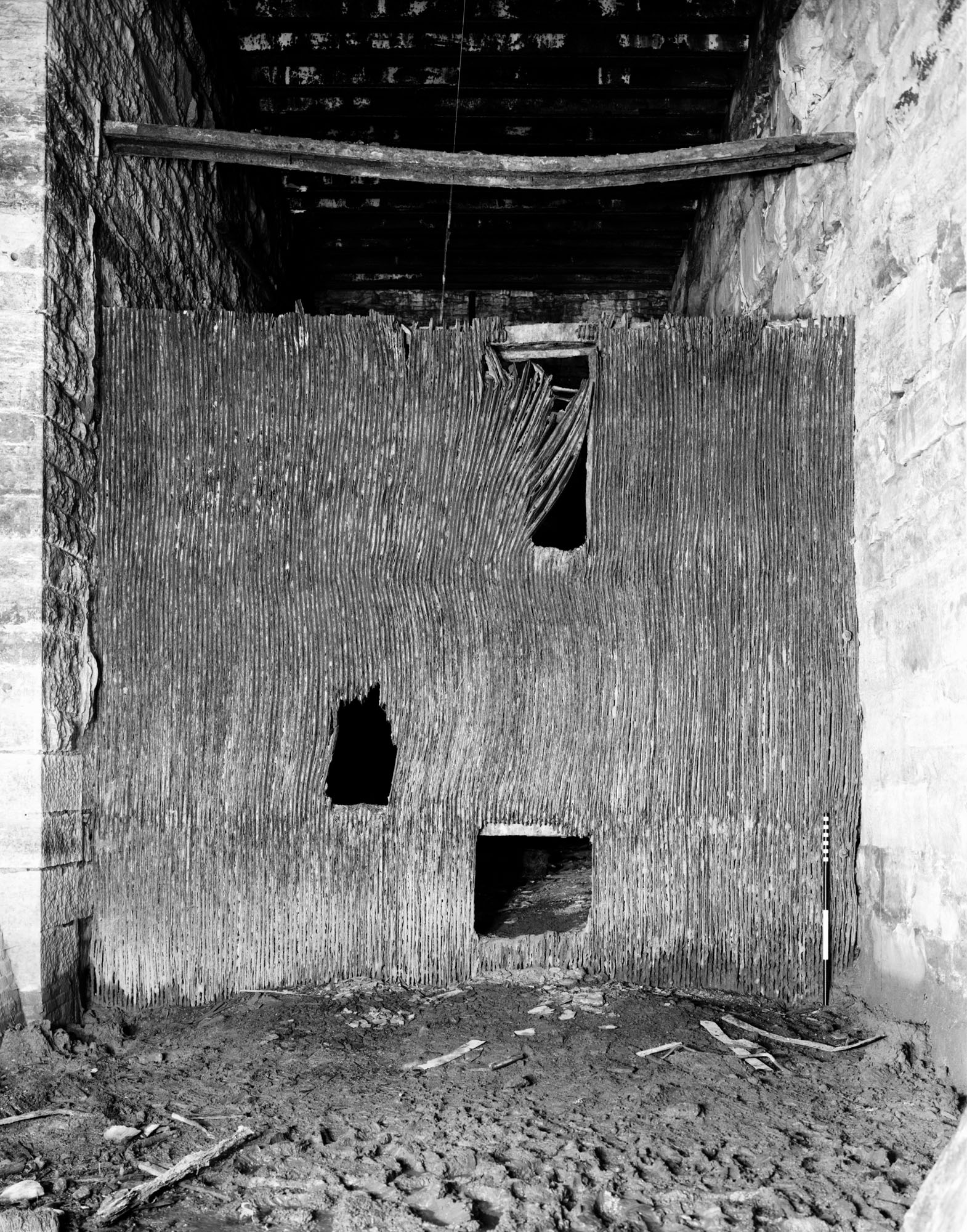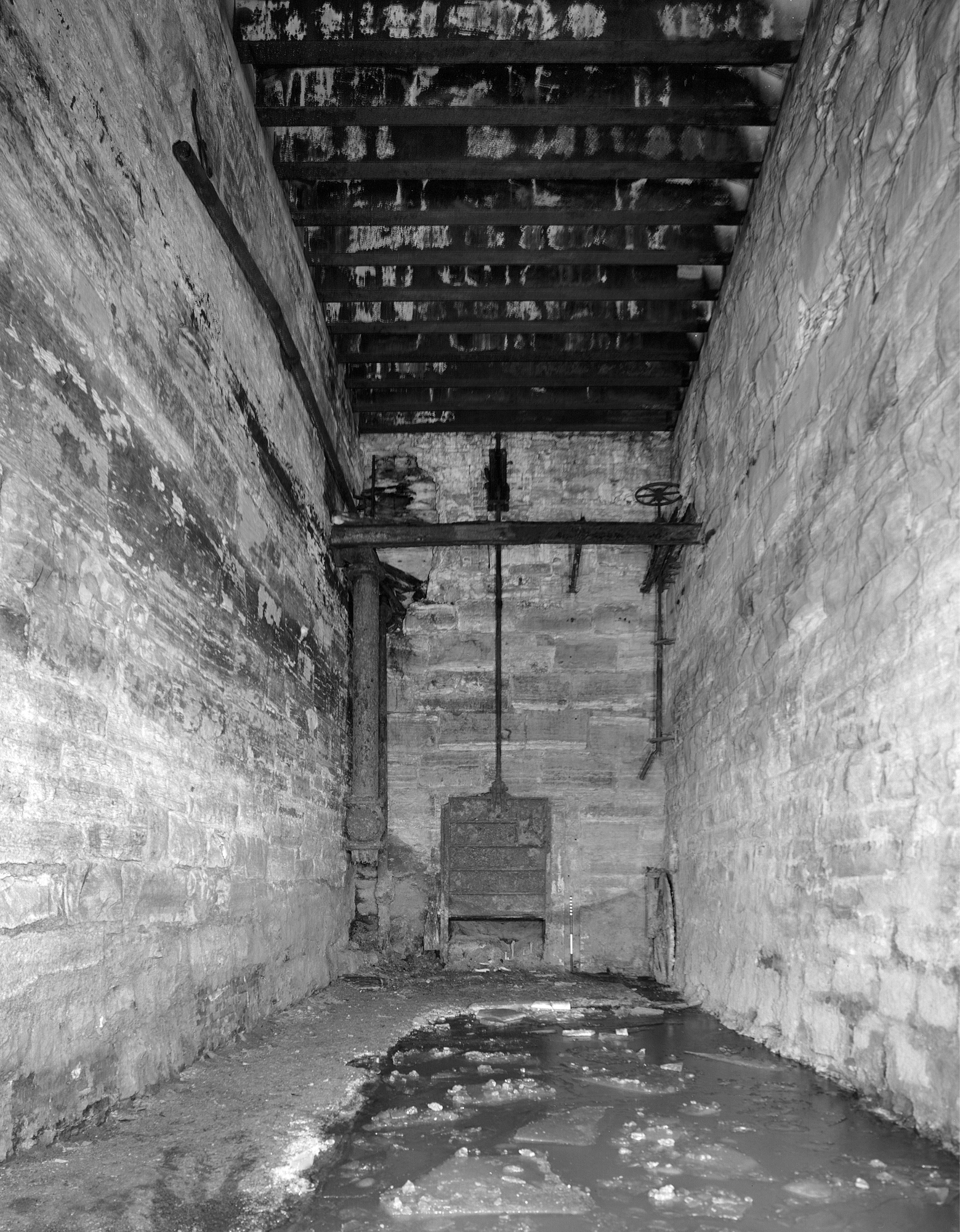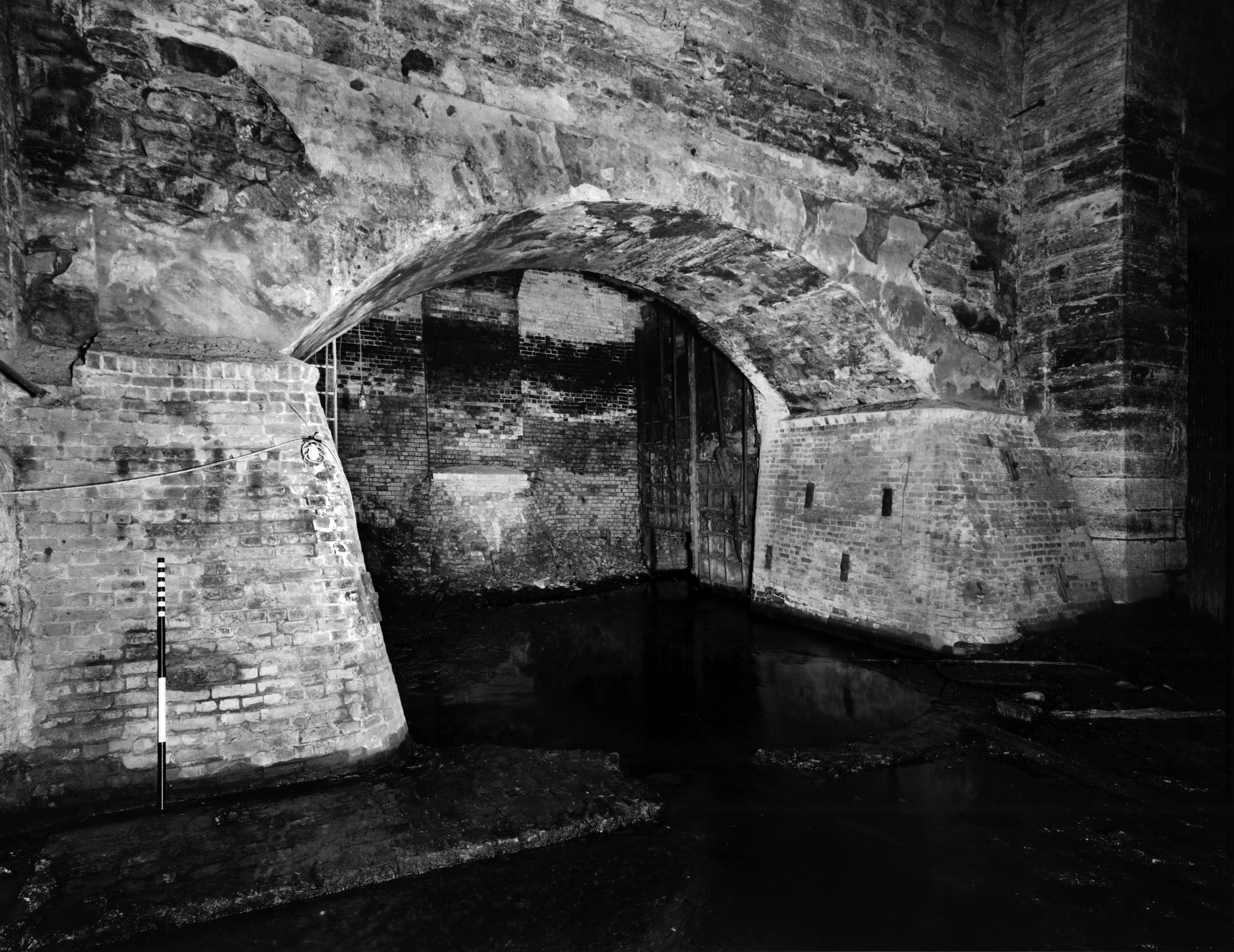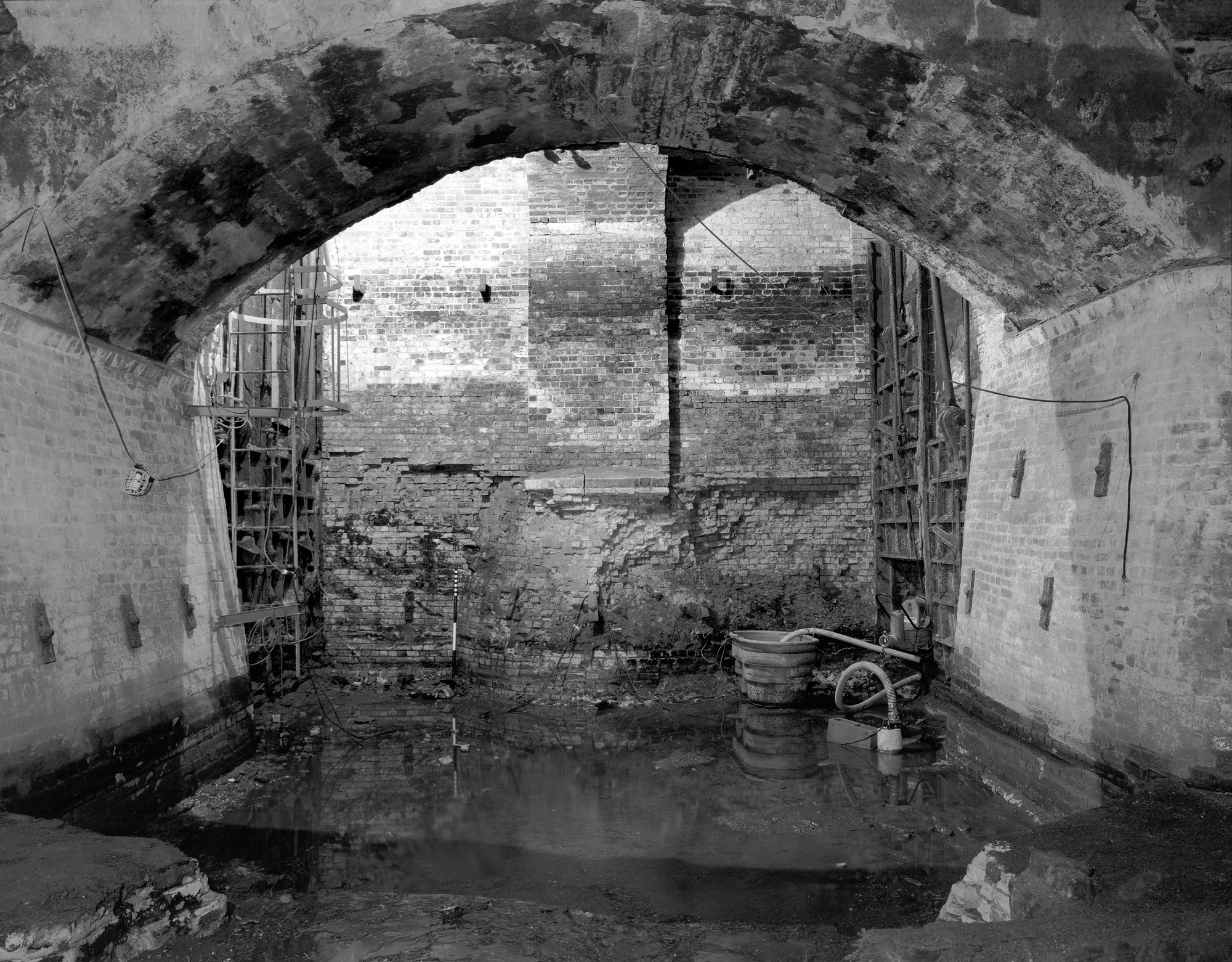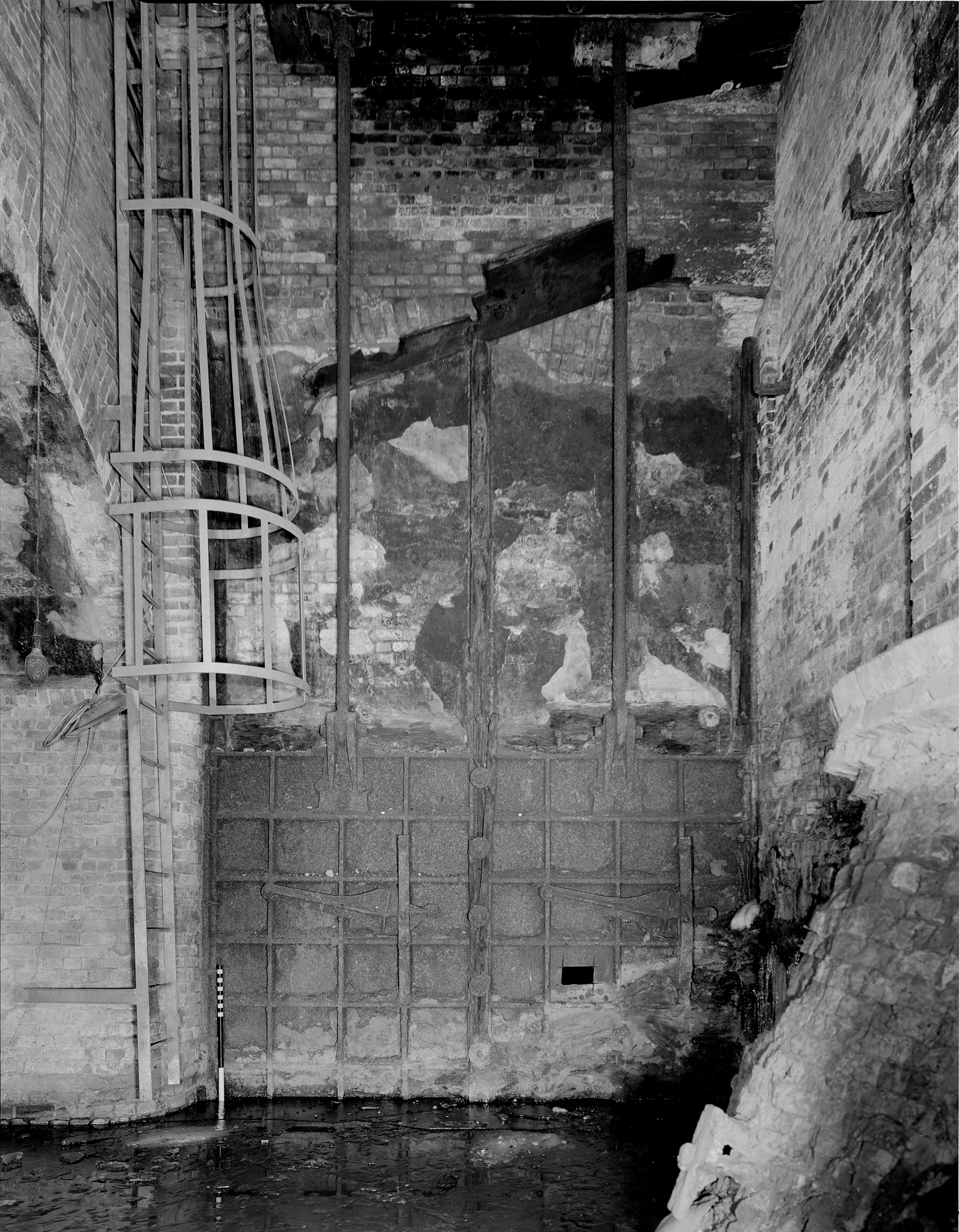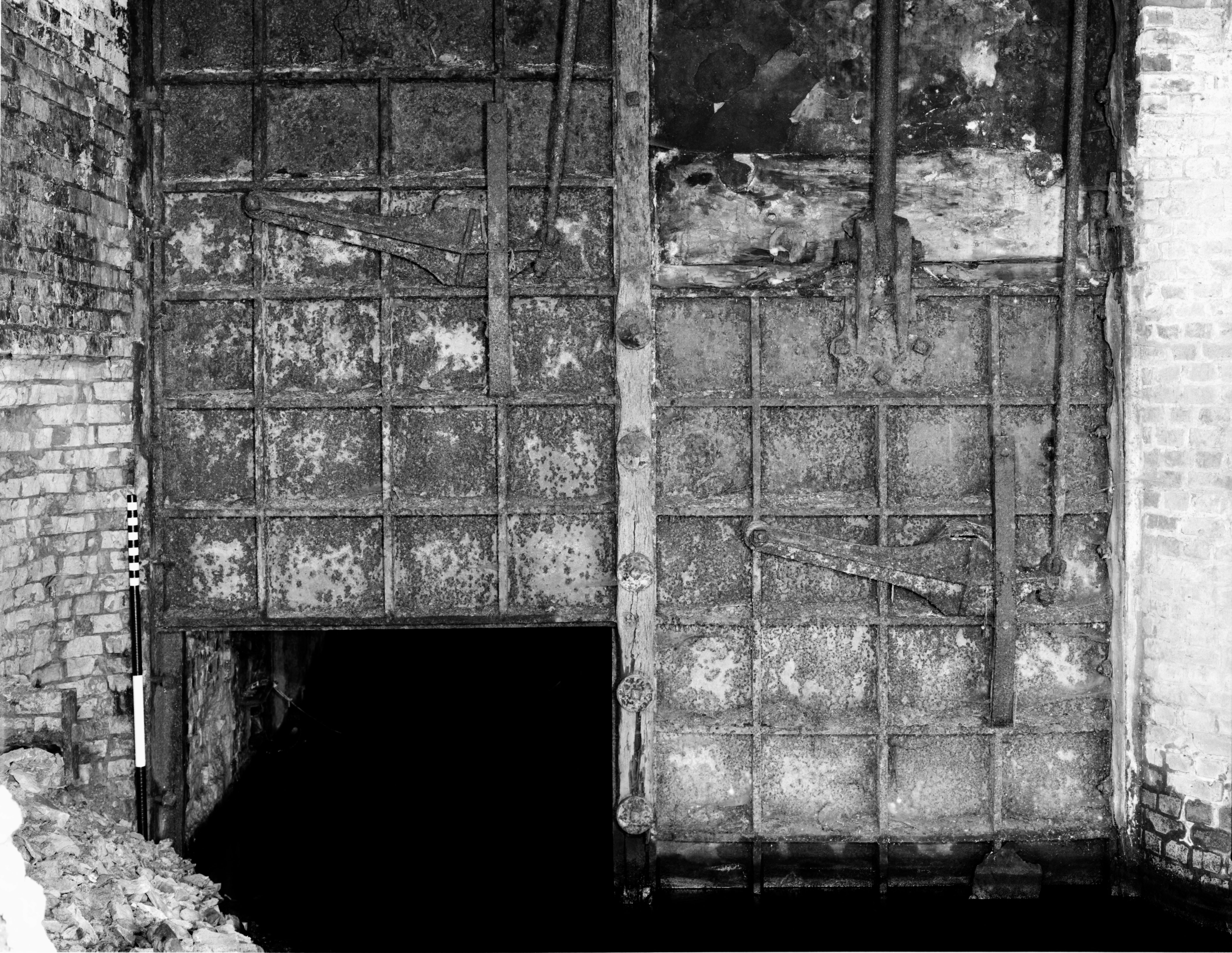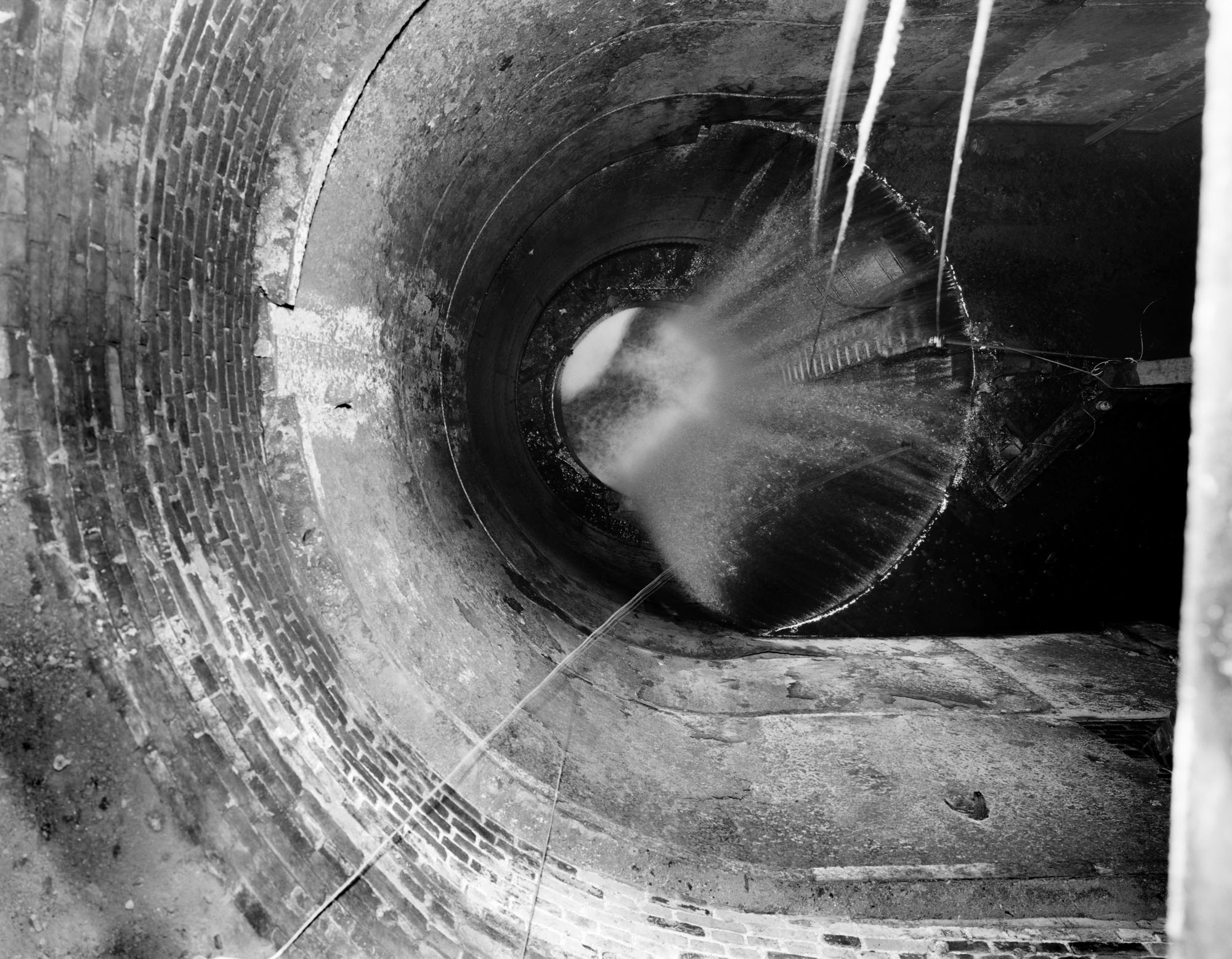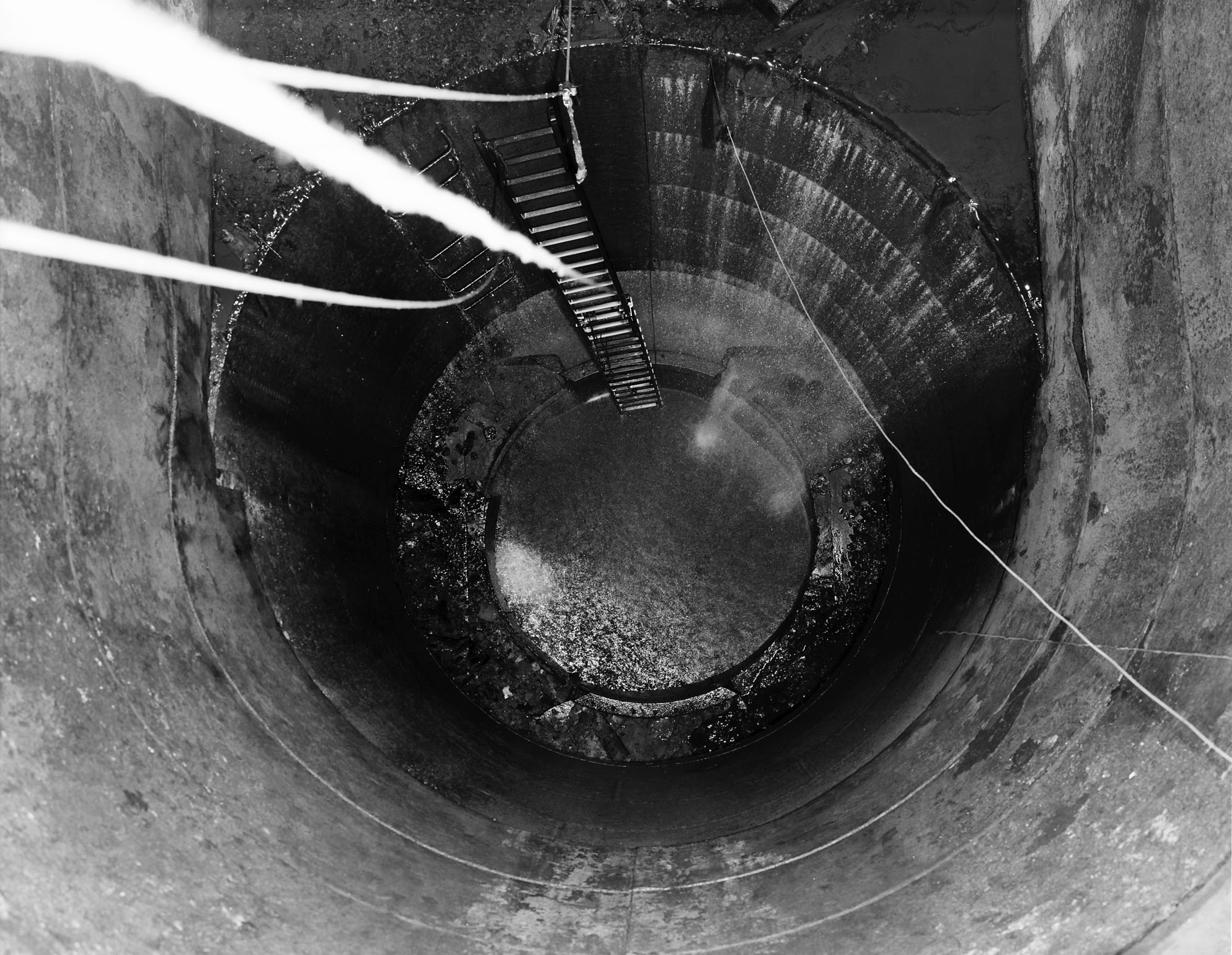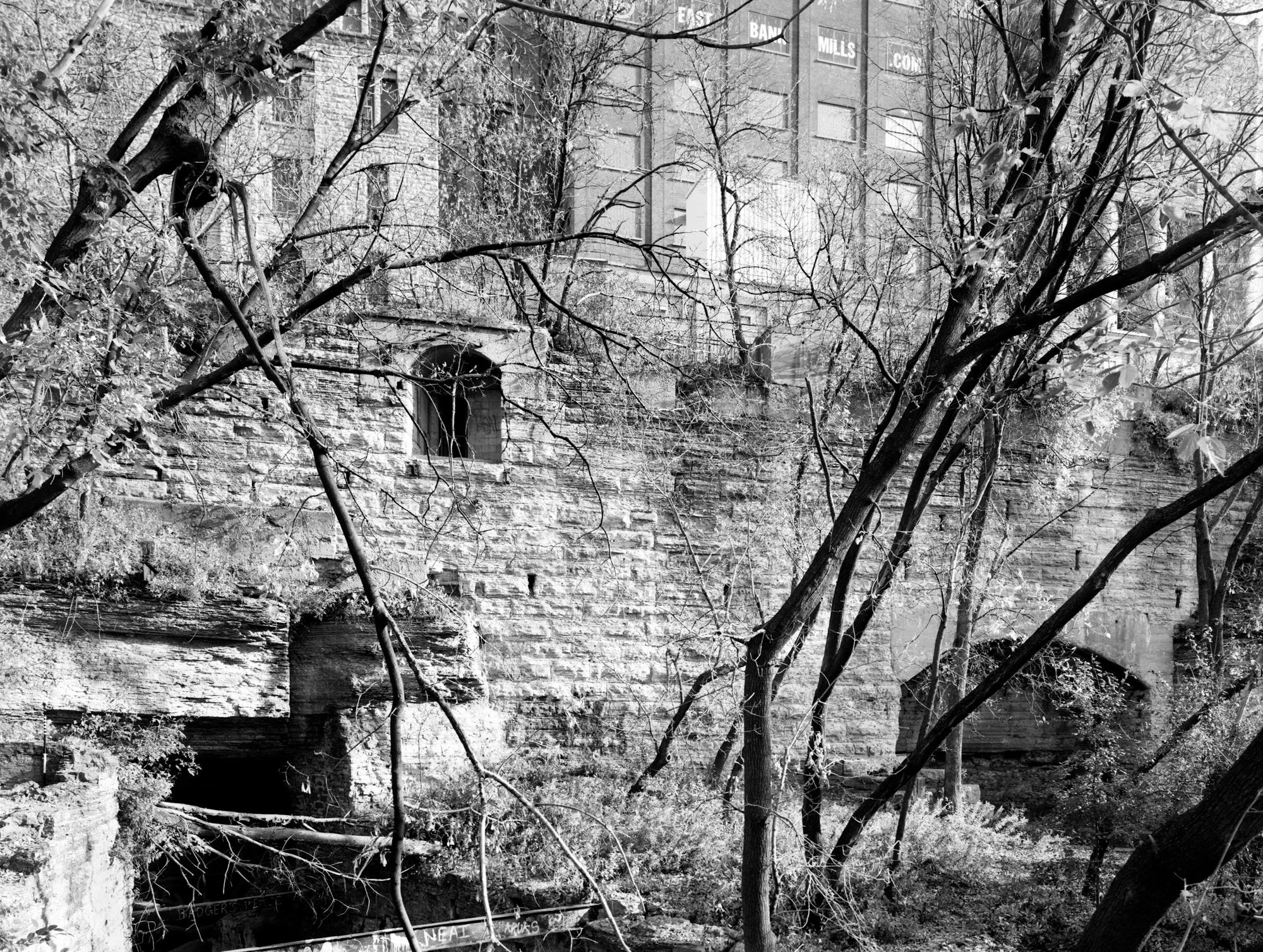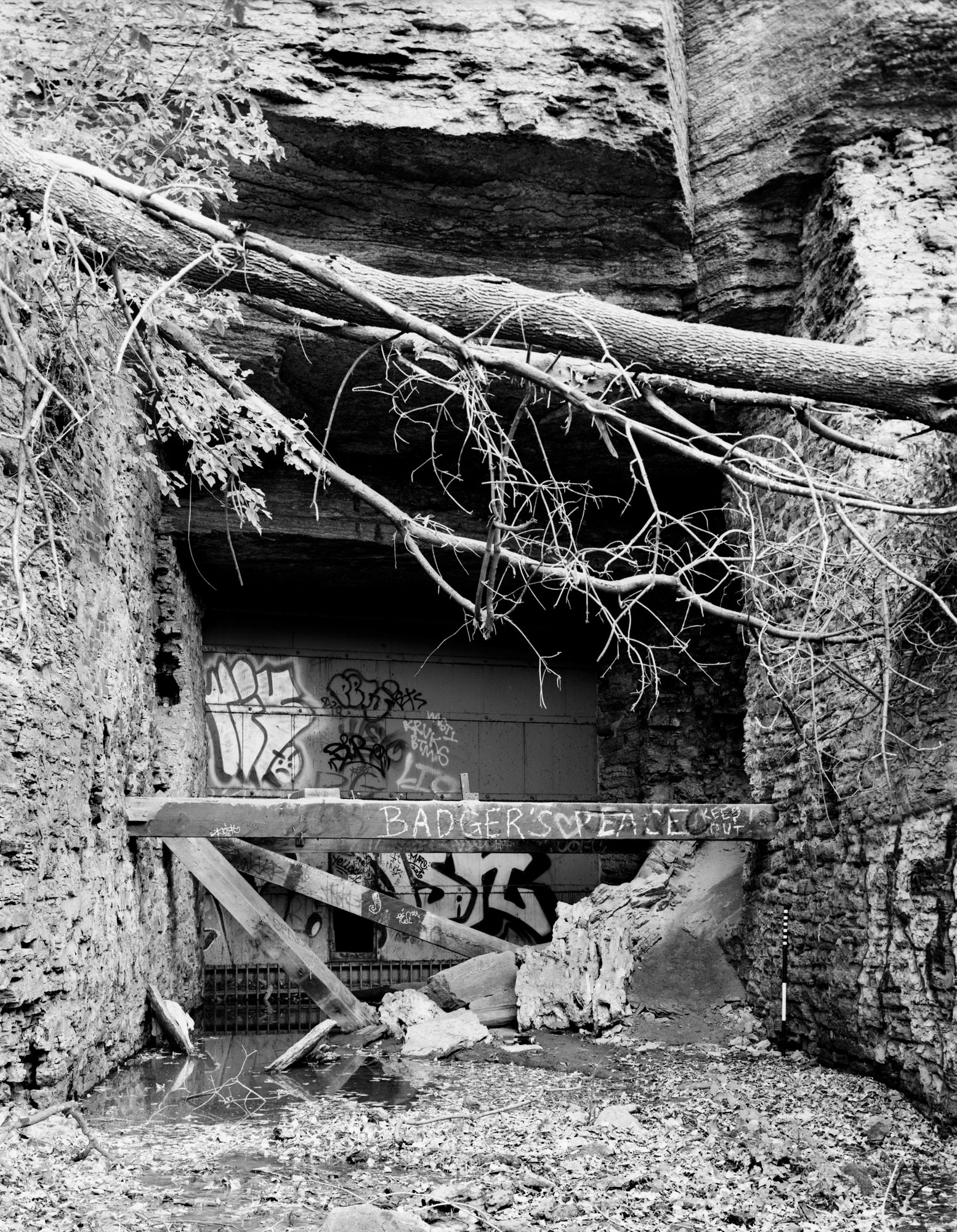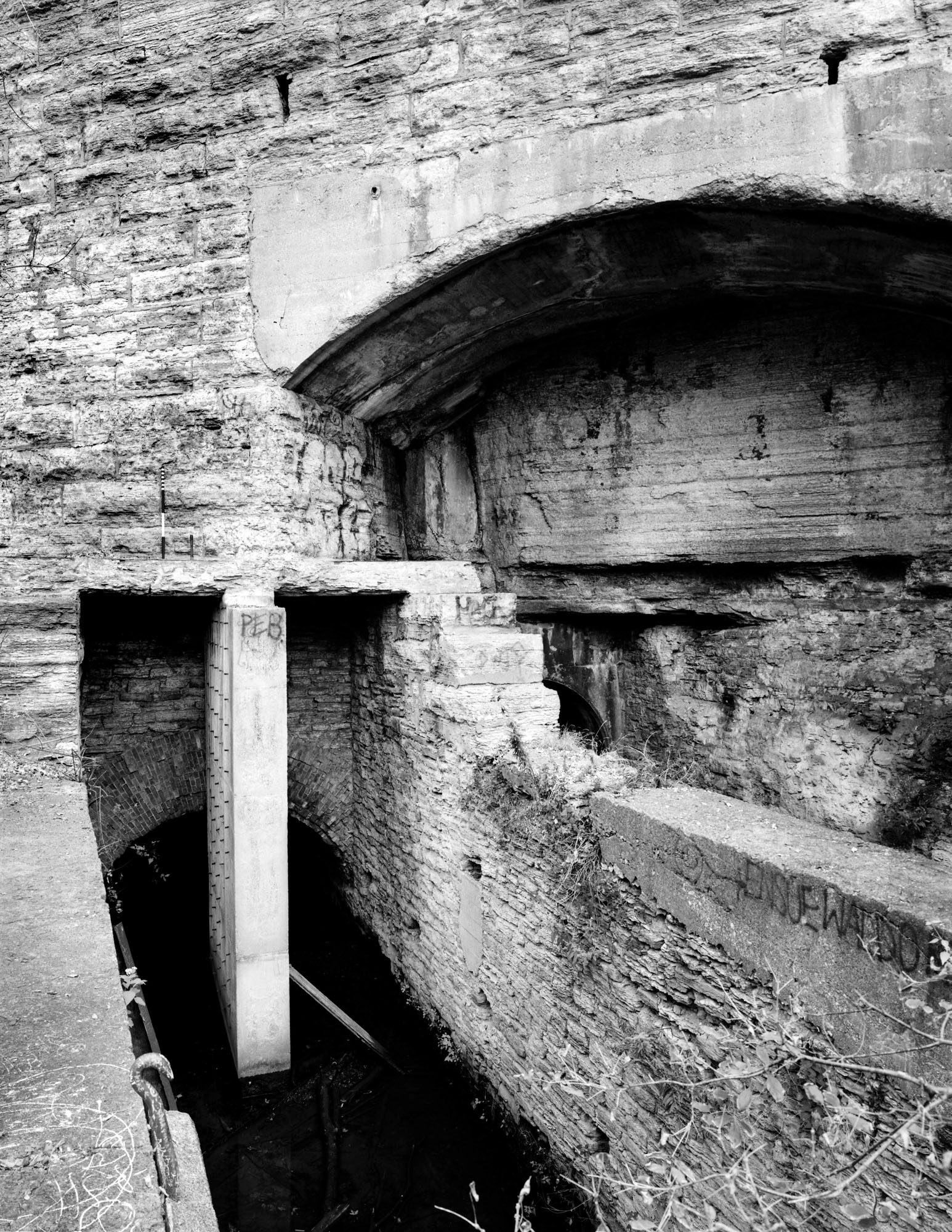Pillsbury “A” Mill
Water Power Tunnel
(1882)
Minneapolis, Minnesota

 2016 Impact Award Winner!
2016 Impact Award Winner!
The Pillsbury “A” Mill is one of the most recognizable historic structures on the Minneapolis riverfront and one of only 25 National Historic Landmarks in Minnesota. The mill’s nineteenth-century water power system is comprised of three main portions: 1) the headrace tunnel that channels water from the Mississippi River to the “A” Mill’s two turbine shafts, 2) the turbine shafts themselves, and 3) two tailrace tunnels that return water to the river.
The City of Minneapolis, Dominium (the building owner/developer), and the St. Anthony Falls Heritage Board and the Minnesota Historical and Cultural Heritage Grant program financed a study to help preserve the tunnel system and find ways to explain its historical significance to the public. The study, which included documentation for the Historic American Buildings Survey (HABS MN-29-5-A) ) and the Minnesota Historic Property Record (MHPR HE-MPC-9995), was performed by Mead & Hunt, Inc. in partnership with CNA Consulting Engineers, 10,000 Lakes Archaeology, Inc., and ARCH3, LLC. A 3D visualization of the tunnel was also created by Artificial Natures, LLC.
Large format photography of the water power system required view camera setups in moving water and confined spaces, the use of hand-held strobe “painting” to illuminate tunnel walls, and work in sub-zero temperature environments.
ARCH3, LLC received one of four 2016 Impact Awards from the Preservation Alliance of Minnesota for the photographic documentation of the tunnel system.

